Invented by McCarthy Stephen, Bernard Scallon, William Strohl, Susan Tam, Omid Vafa, Janssen Biotech Inc
Antibody Fc mutants are engineered versions of antibodies that have specific modifications in their Fc region. The Fc region is responsible for the effector functions of antibodies, including antibody-dependent cellular cytotoxicity (ADCC) and complement-dependent cytotoxicity (CDC). By modifying the Fc region, scientists can selectively eliminate or reduce these effector functions while retaining the antigen-binding capabilities of the antibody.
The market for antibody Fc mutants with ablated effector functions is driven by several factors. Firstly, these mutants offer improved safety profiles compared to conventional antibodies. By reducing or eliminating effector functions, the risk of adverse events associated with inflammation or tissue damage is significantly reduced. This makes them particularly attractive for the treatment of chronic diseases or conditions where long-term antibody therapy is required.
Secondly, antibody Fc mutants with ablated effector functions can enhance the therapeutic index of antibody-based therapies. In some cases, the effector functions of antibodies can contribute to the development of resistance or reduce the efficacy of treatment. By removing these functions, antibody Fc mutants can potentially overcome these limitations and improve patient outcomes.
Furthermore, the market for antibody Fc mutants with ablated effector functions is also driven by the increasing demand for personalized medicine. These mutants can be tailored to specific patient populations or disease indications, allowing for more targeted and effective treatments. This customization potential opens up new opportunities for precision medicine and personalized therapies.
The market for antibody Fc mutants with ablated effector functions is highly competitive and dynamic. Several biotechnology and pharmaceutical companies are actively involved in the development and commercialization of these mutants. Additionally, academic research institutions are also contributing to the advancement of this field through their innovative discoveries and collaborations with industry players.
In terms of therapeutic applications, antibody Fc mutants with ablated effector functions have shown promise in various disease areas. They have been investigated for the treatment of autoimmune diseases, such as rheumatoid arthritis and lupus, where excessive immune activation and inflammation are major contributors to disease progression. Additionally, these mutants have also been explored for the treatment of cancer, as they can potentially enhance the efficacy of antibody-based immunotherapies.
In conclusion, the market for antibody Fc mutants with ablated effector functions is experiencing significant growth due to their improved safety profiles, enhanced therapeutic index, and potential for personalized medicine. As research and development efforts continue to expand, we can expect to see more innovative applications and commercialization of these mutants in the coming years. The market holds immense potential for biotechnology and pharmaceutical companies, as well as for patients who can benefit from safer and more effective antibody-based therapies.
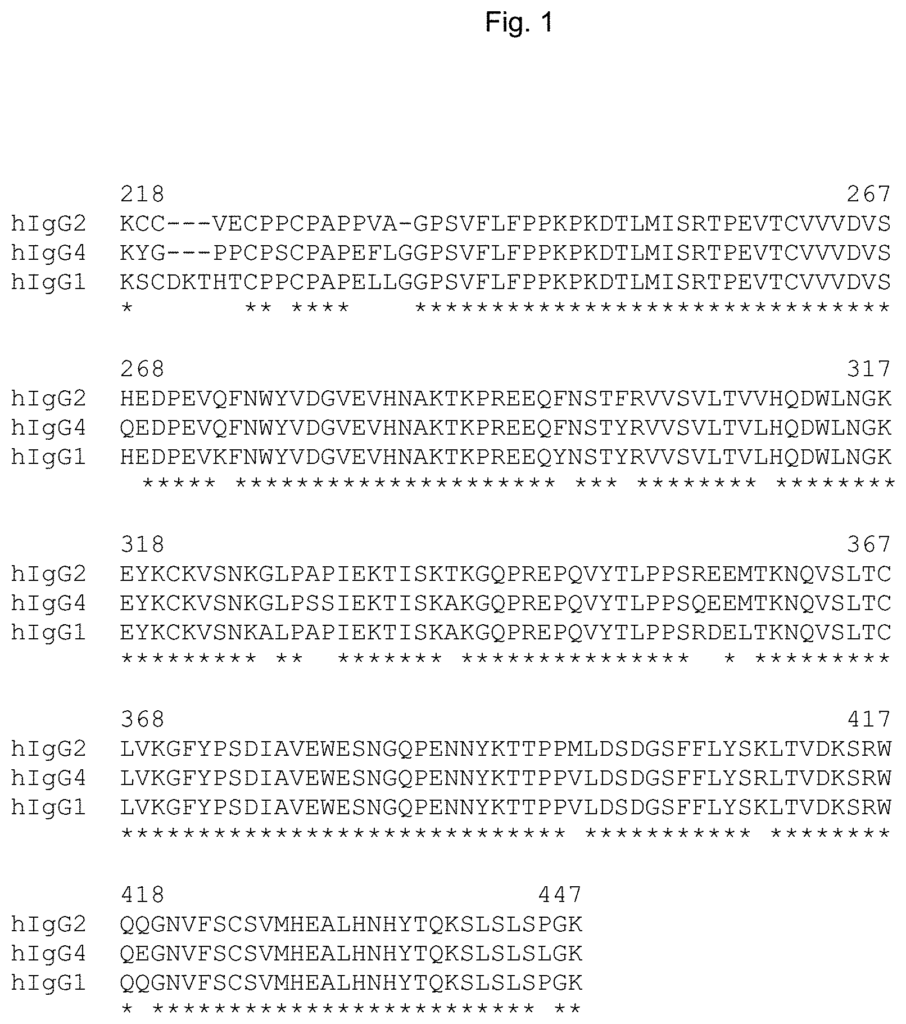
The Janssen Biotech Inc invention works as follows
Antibody and other Fc molecules with variations in Fc region can be used to treat various diseases.
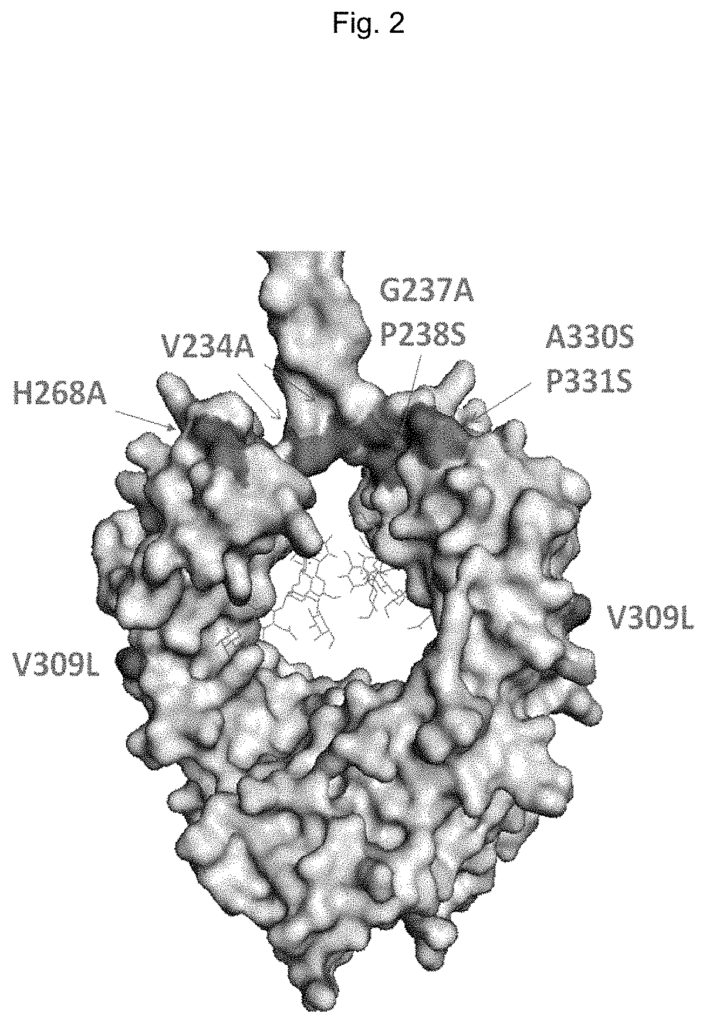
Background for Antibody Fc Mutants with Ablated Effector Functions
The present invention provides compositions of glycosylated, modified immunoglobulin constant regions useful in engineering antibody or antibody-like therapies, such as those containing an Fc region and targeting cell surface receptors. The invention is an IgG2 Fc mutation with reduced Fc?R-binding capacity, but conserved FcRn-binding. These IgG Fc mutations allow therapeutic targeting of antigens on cell surfaces or soluble antigens, while minimising Fc-associated immune effector functions and complement-mediated cytotoxicity. According to the EU numbering scheme, IgG2 mutant Fcs include V234A and G237A. IgG2 mutants are V234A or G237A according to EU numbering. The IgG2 mutant is V234A G237A P238S H268A V309L A330S P331S and optionally P233S.
In one embodiment, IgG2 Fc mutation compositions are used for indications in which the retention of therapeutic antibodies (or Fc fusion) is conserved by interactions with FcRn. Potential toxicity derived through activation of FcRs associated to immune and effector function such as i.) antibody-dependent cytotoxicity, ii.) complement-dependent cytotoxicity, iii.) antibody-dependent cellular phagocytosis, iv.) FcR mediated cellular activation, e. The FcR crosslinking can release cytokines, and the FcR-mediated activation/depletion of platelets is also minimized or avoided. “In one aspect, IgG2 Fc mutants are incorporated into the therapeutic antibodies or Fc fusions of binding agents, such multivalent binders that target ligands to cells involved with neurological disorders, like basal cell ganglion, immune system disorders related to B-cell and T-cell activation or cells involved in tissue healing or repair, such fibroblasts or stem cells.
In another embodiment, IgG2 mutants are used in a pharmaceutical composition. In another embodiment, the IgG2 mutant is a portion from a pharmaceutically-active molecule. Pharmaceutical compositions containing the IgG2 mutant or active IgG2 mutant-comprising molecule are useful in treating diseases characterized by migration and concentrations of macrophages and monocytes. The IgG2 mutant-comprising molecule is useful in one aspect for binding to a target located within a neuronal tissue or an endocrine, cardiac, synovial, dermal, or mucosal tissues. The IgG2 mutants can be used to treat a variety of conditions, including Graft-v. Host Disease, host-v. graft Disease, organ transplant rejection, bone-marrow rejection, autoimmunity (such as vasculitis), arthritis, autoimmune thrombocytopenia, fetal/neonatal immune thrombocytopenia, asthma, and allergy, chronic or acute inflammatory disease such as Crohn?s Disease or scleroderma
The present invention provides a Fc-containing isolated molecule with decreased affinity for at lease one Fc?R (Fc?R) as compared to an Fc-containing molecule with a wild type Fc domain, comprising mutated IgG1 or IgG4 Fc domains, comprising mutations L235A and G237A. Residue numbering is according to the EU numbering system. “The present invention provides an isolated Fc-containing molecular having decreased affinity for at least one Fc?R (Fc?R), as compared to a Fc-containing molecular with a wild type Fc. This molecule comprises a mutated IgG1 Fc region comprising mutations G237A andP238A. Residue numbering is according to the EU system.
The present invention provides a recombinant isolated polypeptide that comprises (a) a domain capable of interacting with a target; (b) a Fc domain that includes a mutated IgG1 domain comprising the mutations H268A and A330S, or a mutated IgG4 domain comprising the mutations F234A and S228P.
Abbreviations
ADCC=antibody-dependent cellular cytotoxicity; ADCP, antibody-dependent cellular phagocytosis; CDC=complement-dependent cytotoxicity; IgG=immunoglobulin G; ITAM=immunoreceptor tyrosine activating motif; ITIM=immunoreceptor tyrosine inhibitory motif; Mab=monoclonal antibody; FDCR=Fc-dependent cytokine release; Fc?R, FcgR, or FcgammaR=Fc gamma receptor
Definitions & Explanation Terminology
?Antibody-dependent cell-mediated cytotoxicity? ADCC or ADCC? Refers to a type of cytotoxicity where secreted Ig is bound to FcRs on certain cytotoxic cell types (e.g. Natural Killer (NK), neutrophils and macrophages). This allows these cytotoxic effectors cells to bind to an antigen bearing target cell, and then kill it with cytotoxins. The cytotoxic effector cells are stimulated by ligand-specific high-affinity IgG antibody directed at the surface of the target cell. This is absolutely necessary for this type of killing. The lysis of the target cells is extracellular and requires direct cell-to cell contact. Complement does not play a role in this process.
The ability of any antibody to mediate the lysis of a target cell by ADCC is testable. To test ADCC activity, the antibody of interest can be added to cells that display the target ligand, in conjunction with immune effectors. These cells may then be activated by antigen antibody complexes, resulting in the cytolysis. The release of labels (e.g. radioactive substrates fluorescent dyes, or intracellular proteins from the lysed cell) is a common way to detect cytolysis. These assays can be performed with peripheral blood mononuclear (PBMC) or Natural Killer cells. Wisecarver et. al., 1985, 19 :211, Bruggemann et. al., 1987, J Exp. Med 166 :1351, Wilkinson et. al., 2001, J Immunol Methods 258:183, Patel et. al., 1995 J Immunol Methods 184 :29 are all examples of ADCC in vitro assays. Alternatively or additionally, ADCC of the antibody of concern may be assessed in vivo. For example, using an animal model such as the one described in Clynes et al. 1998, PNAS, USA 95:652, whose contents are incorporated in their entirety.
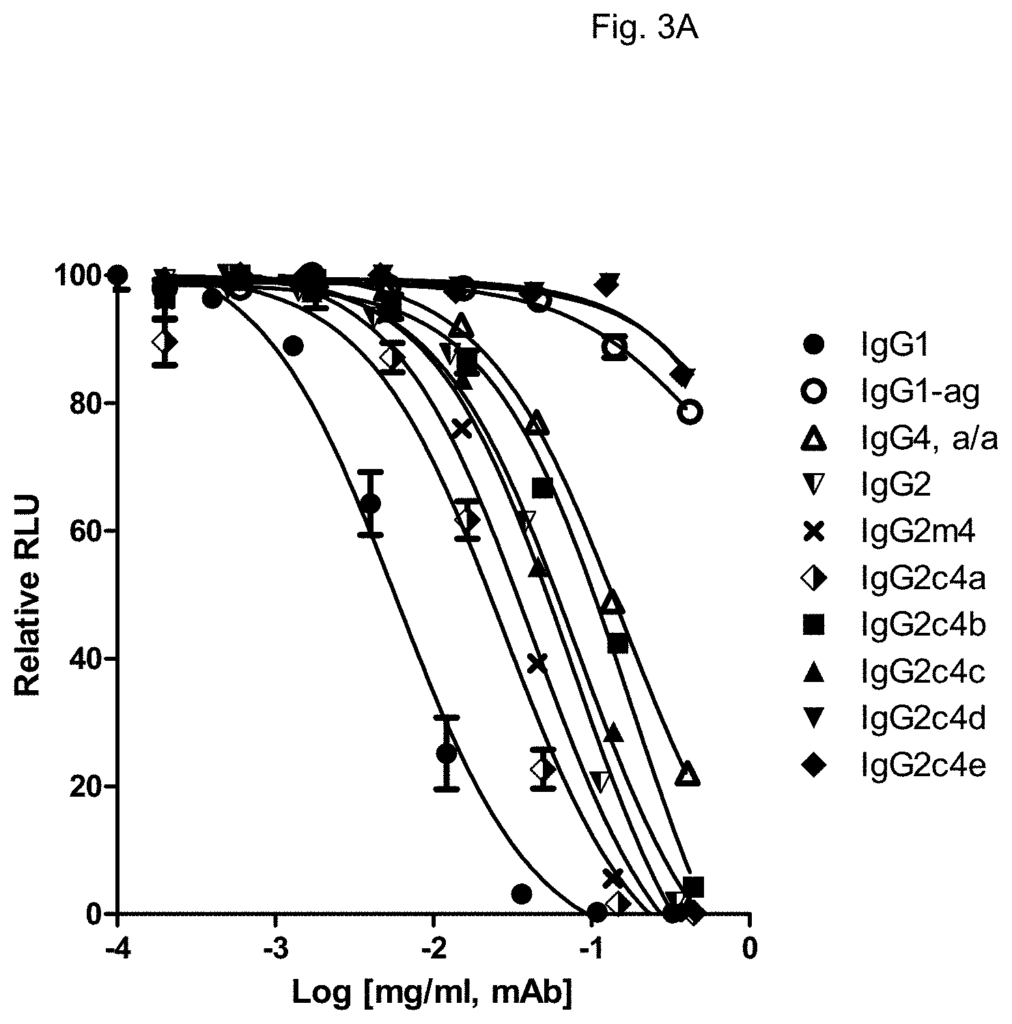
?Complement-directed cytotoxicity? “CDC” is a term used to describe a form of cytotoxicity where the complement cascade activation occurs when the complement component C1q binds to antibody Fc.
?Reduced ADCC?, ?reduced CDC? “?Reduced ADCC?,?reduced CDC? Refers to the antibody-induced ADCC or CDC, and/or ADCP which is statistically non-significant in standard assays measuring ADCC, CDC, and/or ADCP such as those described herein, and in U.S. Pat. No. 8,871,204.
The term?Fc? ?Fc-containing protein? The terms?Fc containing protein? As used herein, refer to a monomeric or dimeric protein that has at least one immunoglobulin domain. The CH2 domains are at least part of the dimeric portion of the protein/molecule, e.g. an antibody.
The term “monoclonal antibodies” is used herein to refer to a specific form of Fc-containing protein that contains at least one ligand binding domain which retains substantial homology with at least one of a heavy or light chain antibody variable domain from at least one species animal antibody. As used herein, a specific form Fc-containing proteins consists of at least a ligand binding region that retains substantial homology with at least a heavy chain or light chains antibody variable domains of at least a species of animal antibodies. Monoclonal antibodies can be monovalent, monovalent or bivalent. “A bispecific antibody can be included in the term of monoclonal antibodies.
Wild type of human IgG2? Fc region” Refers to an IgG Fc sequence that is a fragment of the SEQ ID No: 1 amino acid sequence or the entire sequence, which ranges from residues K218-K447 on the human IgG Heavy Chain, according to Kabat’s EU numbering. The amino acids of the constant region have been numbered in accordance with the alignment with the EU IgG1 antibody (SEQID NO: 3), which is the antibody human IgG1. (See Cunningham and al., J. Biol. Chem., 9: 3161-70). The heavy and the light chains are aligned to the heavy and the light chains in EU in order to maximize the amino acid sequence identification. Each amino acid is then assigned the same number in EU as it is in the antibody. In the art, it is common to use the EU numbering system (see, for example, Kabat et. al., Sequences of Protein of Immunological interest, NIH publication no. US Department of Health and Human Services, 1991. This convention states that the “wildtype IgG2″ is a?wildtype IgG2?” According to this convention, the?wildtype IgG2? “1, SEQ ID No: 1
?Recombinant? “Recombinant” is used in this context to refer to antibodies and other proteins prepared, expressed or created by recombinant methods.
?Vector? “Vector” is a polynucleotide that can be duplicated in a biological system, or moved between systems. Vector polynucleotides contain elements such as polyadenylation signals, selection markers or origins of replicating. These elements are used to aid in the duplication of polynucleotides within a biological system. These biological systems can include cells, viruses, animals, plants, and reconstituted systems that use biological components capable to duplicate a vector. A polynucleotide can be either DNA or RNA or a hybrid.
?Polynucleotide? “Polynucleotide” is a molecule consisting of a chain nucleotides that are covalently connected by a sugar phosphate backbone, or another covalent chemical. Polynucleotides include DNA, RNA and double-stranded DNA.
?Reduced binding? Refers to the reduced binding of antibodies of the invention that have at least one substitution made in the Fc regions described herein and, in some embodiments, to an Fc-R receptor compared to binding of the parent antibody without the substitution. ?Reduced binding? Reduced binding can be 100-fold or 500-fold. It may also be 1000-fold or 5000-fold. In practice, antibodies that exhibit’reduced bounding? To a specific Fc?R, antibodies that exhibit?reduced binding?
Overview
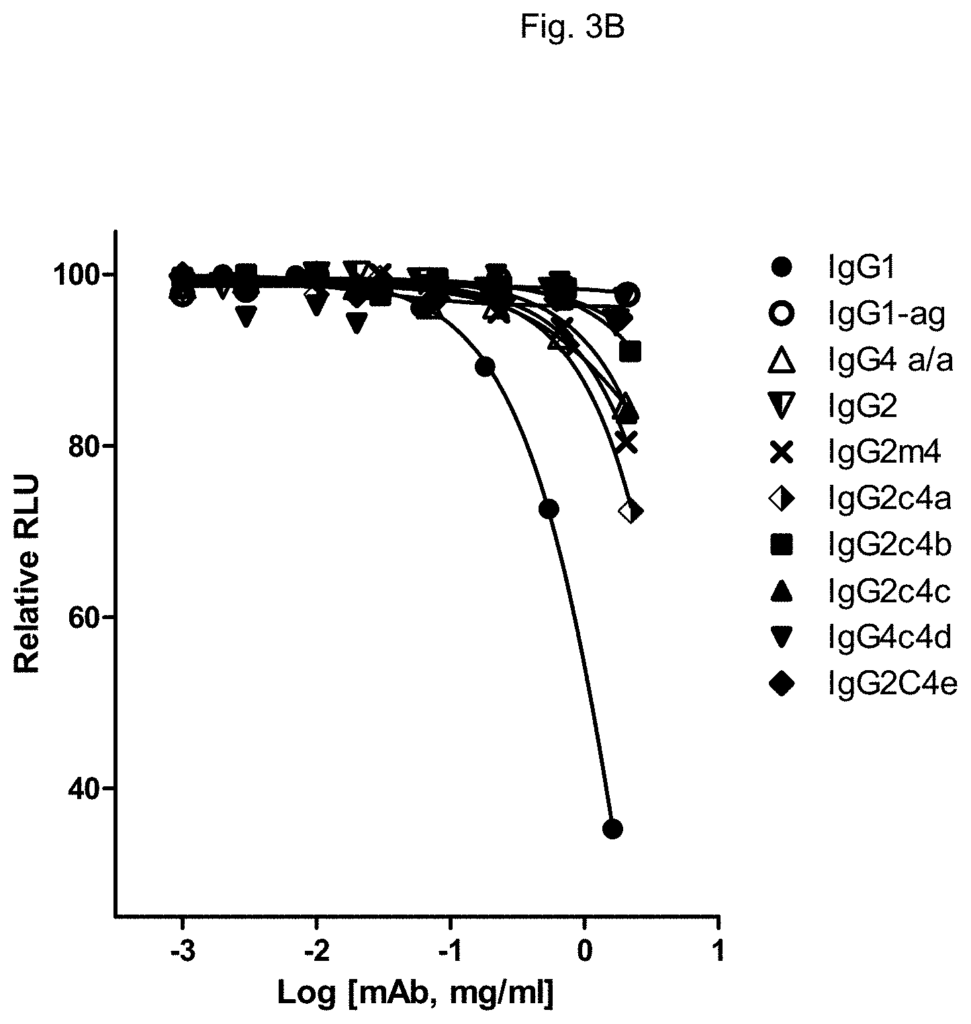
The present invention was motivated by a desire to identify an Fc domain that could be used in the production of therapeutic antibodies and Fc-fusions and biopharmaceuticals of improved safety, in terms of their inability of causing cytokine releases or damaging or killing target ligand displaying cell and tissues around targeted cells.
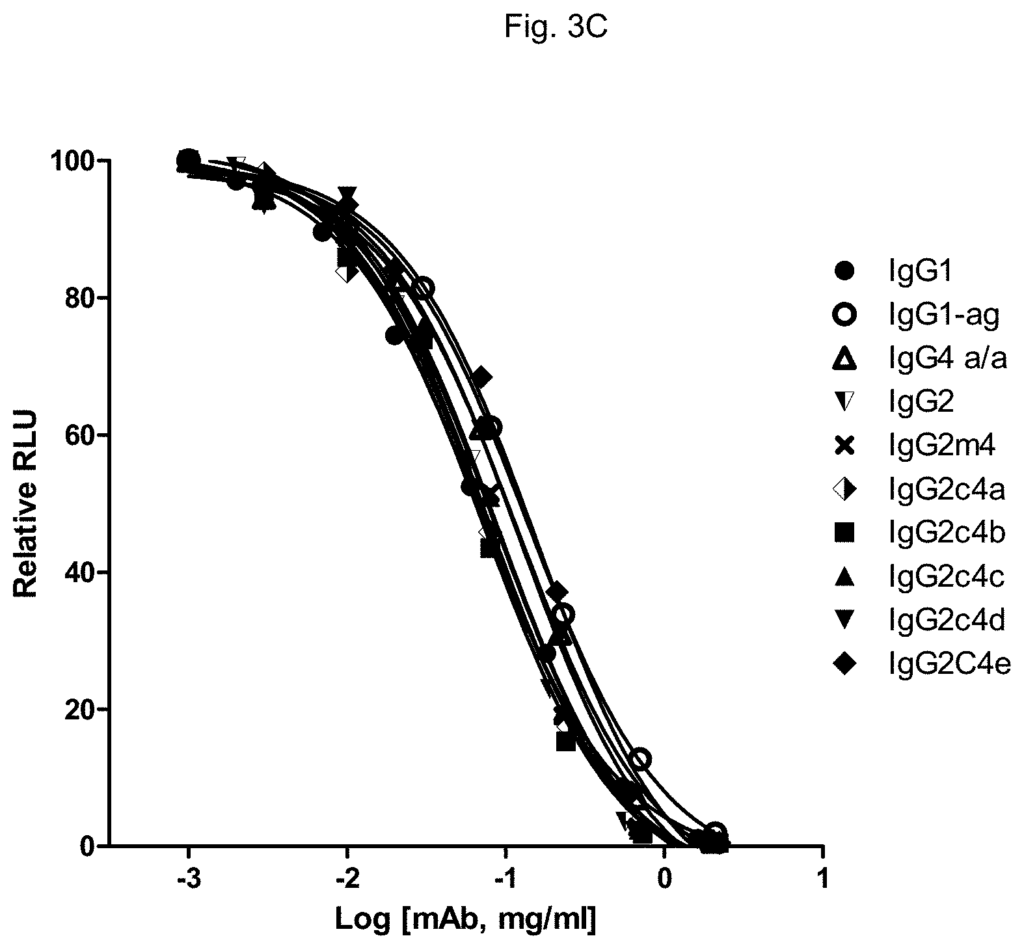
Click here to view the patent on Google Patents.
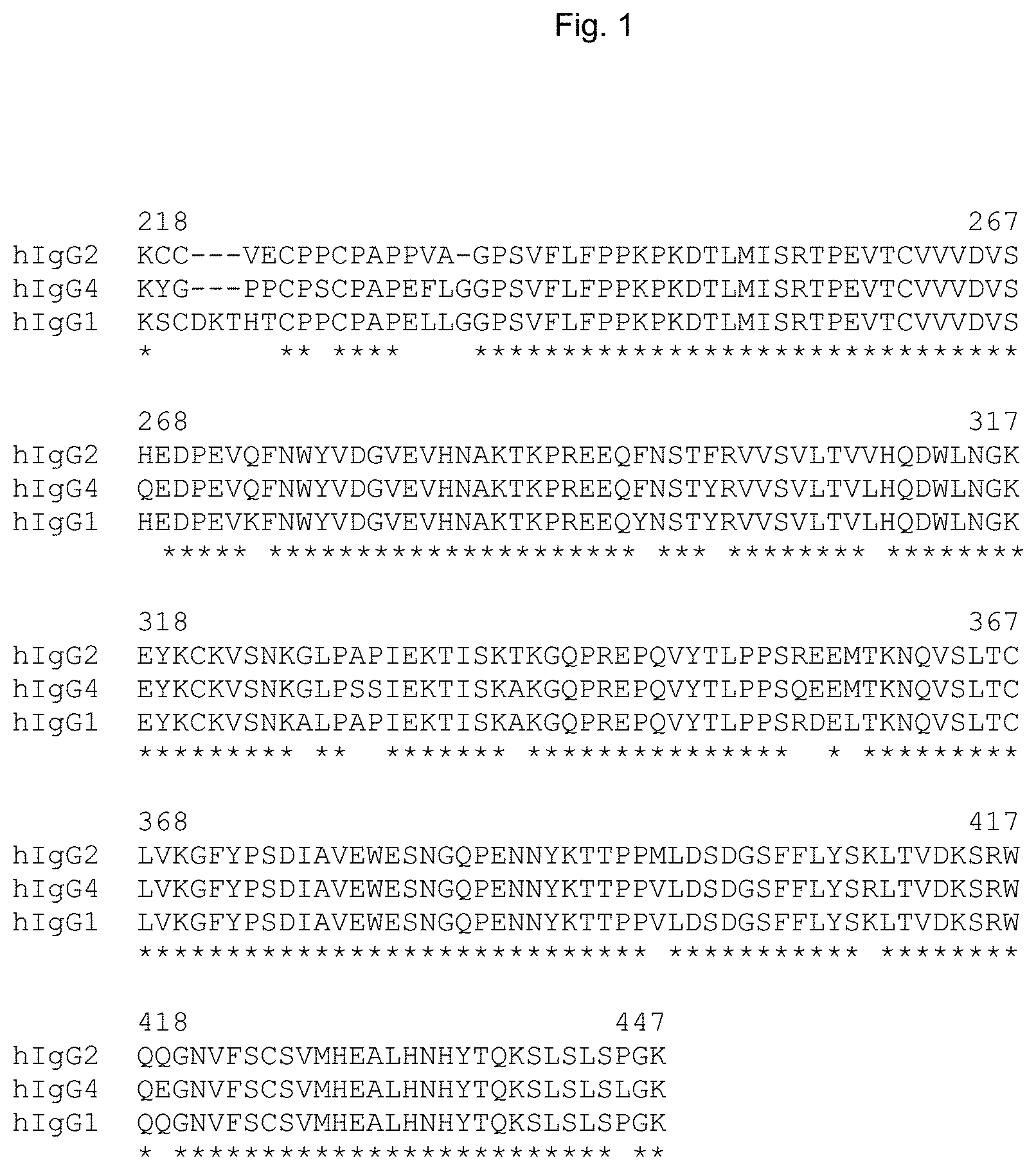
Leave a Reply